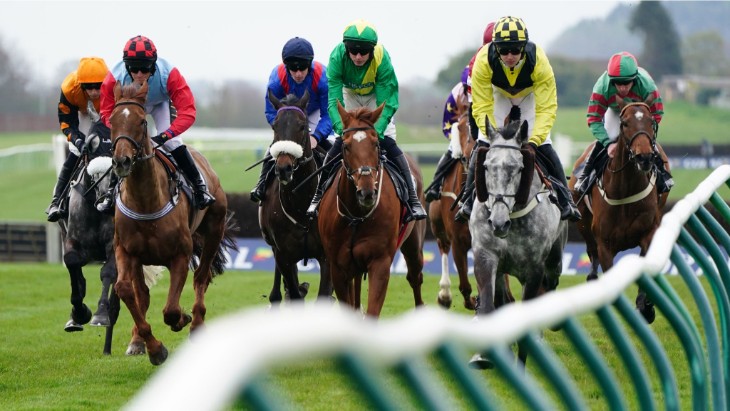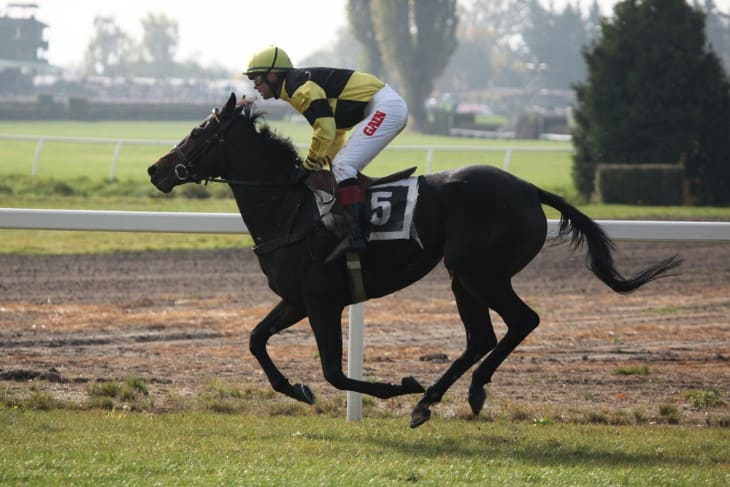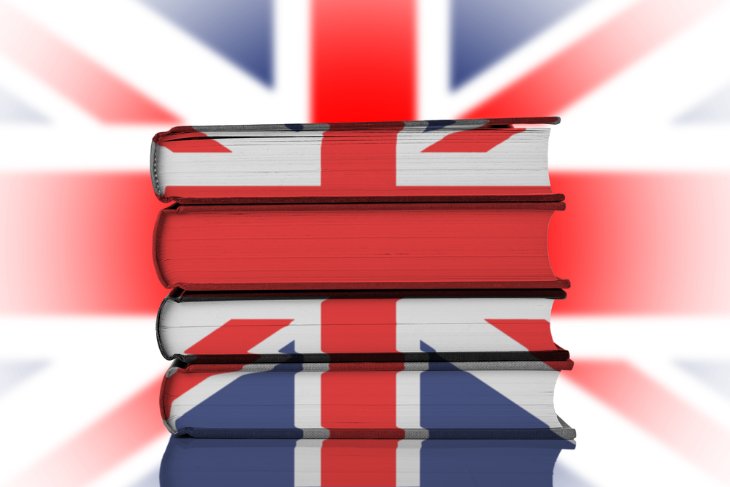This British culture, which has endured for centuries, has been sustained by horse racing; this is also mirrored in UK literature as a whole. By exploring how horse racing has been depicted in novels, poems, and plays, the reader can see that the sporting scene's impact on Britain has also been reflected in some works of art (some of them famous) that have emerged.
The Early Beginnings
UK literature featured horse racing from as early as the 1700s. This was the case for Jonathan Swift in his book Gulliver's Travels, which was published in 1726. In this tale, Swift introduces us to the Houyhnhnms, a group of noble and wise horses. They live in a society where intelligence and truth mean everything, unlike humans who keep making silly mistakes. Swift uses these horse characters to show what he sees as the better qualities of life, such as honesty and rational thinking.
However, Horse racing is one example among many animals that Swift used in his story; he really sought to engage people about human nature and society. He used this comparison to identify areas where humanity fell short. His work shows that even back then, horse racing wasn't just another sport; it was an opportunity to address major concerns linked with living well or doing better.
This first foray paved the way for more appearances in literary works by horse racing. It enabled writers to discuss important issues relevant to their times. Employing horses on a book cover page makes books appealing. One could, therefore, observe various aspects of human behaviour in those races interwoven with excitement and drama experienced during the contests staged within English borders.
When discussing British literature about thoroughbred competitions, one must mention these great authors: Victorians enjoyed seeing their own lives reflected quite clearly through these pages filled with galloping hooves.
Victorian Era: A Reflection of Society
Horse racing became widespread during the Victorian era, hence its prevalence in literature. This was a period of great social transformations, and the theme of horse racing exemplified these shifts. Writers such as Charles Dickens and George Eliot used races to address social problems that were current in their times.
In 1836, Charles Dickens mentioned a disorderly horse race in his "The Pickwick Papers." This race was not only about sport; it also exhibited idiocy and sometimes dishonesty among the individuals involved. Dickens uses the event to show how others prefer money or status over being sincere or good.
Horse racing is an important aspect that George Eliot captures in her novel "Middlemarch" which was published in 1871. In her book, she explains that it is like gambling for those gamblers as people take risks when making life choices; they are just like betting on races. Like running, life involves taking chances and making decisions where failure and success might result.
These tales illustrate how Victorian society saw horse racing not only as an athletic activity but also as a reflection of its own life experiences. The races served as spaces where different sections of society mingled, exposing social divisions and interactions at that time. They exposed people's personal desires for success while at the same time indicating some harsh realities faced when making major decisions.

Horse Racing in Victorian Poetry
- Celebration of the Sport: Horse racing was used to address and condemn poor societal behaviours and practices. This incorporated horse racing into their stories more deeply and linked them better to the issues and concerns of their times. Victorian poets often celebrated horse racing in their works. They captured the excitement and energy of the races. Poems from this time describe fast-moving scenes, crowds shouting, racehorses looking magnificent when they are on tracks. These poems allowed readers a thrilling experience, thereby living through words and experiencing competition.
- Critique of Gambling: At the same time, Victorian poetry denounced horse racing's gambling aspect. Poets pointed out the hazards involved in betting and wrote about how gambling could lead to loss and regret. Using these poems, they wished to discourage readers from being excessively drawn into the side of sports that depended on betting.
- Reflection of Society: Victorian horse racing poems contain something beyond mere sport. They show how different segments converged at this venue for races. Poets express their opinions concerning social interrelationships experienced during races. These remarks reveal various dimensions of society as well as its class stratifications at that moment.
Victorian poetry used horse racing, through its vivid descriptions and critical reflections, to illustrate moments during which authors illustrated the excitements and challenges of the era.
Modernist Insights
During the 20th century, modernist writers gave new viewpoints on equine racing representations in literature. For instance, Siegfried Sassoon was not only a poet but also a lover of horse' races; his writings mostly deliberated more on broader topics such as time, death, or human life while based on horse racing contexts.
Sassoon's poems often portray horse racing as a sport and a stage for human drama and emotions. He uses the race setting to explore how people deal with the passage of time and the inevitability of change. For Sassoon, the racecourse was where personal and collective memories converge, making it a poignant backdrop for his reflections on life and mortality.
This modernist approach to writing about horse racing shows how the sport can serve as a powerful metaphor for life itself. The sport's unpredictability, the competitors' highs and lows, and the fleeting moments of victory and defeat mirror the human journey. This literature aspect allows horse racing's subject matter to reverberate globally, linking its excitement with its more profound reflections upon life.
Through their innovative and reflective narratives, modernist writers like Sassoon have enriched the literary landscape. Their works show that horse racing can be a rich source of inspiration for exploring complex emotional and philosophical issues. Horse racing remains an important theme in contemporary literature because it provides insights into external actions and internal thoughts or feelings.
The Racy Novels of Jilly Cooper
Jilly Cooper is a famous writer who frequently focuses on horse racing and show jumping. Her novels are known for telling vibrant and entertaining stories in the glamorous world of equine sports. Thus, one of them, "Riders" from 1985, is a perfect sample. Here, she takes the reader to exhibit what happens in a competitive and corrupt world of show jumping.
In Riders, humour and acute observations characterised Cooper's account of her various characters' lives, passions, and ambitions. The story revolves around riders' dreams and the personal conflicts of their owners and associates. Her books portray horse racing and show-jumping as sports and settings for human emotions and social issues.
Cooper uses a horse racing background to reveal important themes such as social climbing, power-seeking, etc., among the personages involved here. This approach makes the sport more comfortable for readers unfamiliar with horse racing even while it does not conceal some dark sides such as disloyalty or envy typical to this sphere before.
Francis's writing is unique because it can be enjoyed on two levels. He manages to blend severe themes with popular narratives that engage the audience simultaneously. By setting these tales in the high-stakes racing environment, Jilly opens up spaces where her stories become universal across race lines. Consequently, she continues to attract readers who appreciate the quality of the storytelling set within the backdrop of thrilling horse competitions.

Dick Francis: Crime Through the Racing Lens
- Authentic Settings: Dick Francis was a former jockey who wrote over forty novels, most taking place within the confines of the horses-racing industry at large. His past enabled him to create incredibly true-to-life settings depicted throughout his works. In most cases, jockeys and trainers, among other insiders, populate his books, providing a realistic view of the world he describes. Francis was well-versed in horse racing; thus, his genuine understanding of it is apparent in his works.
- Combining Crime and Racing: Francis melded crime into horse racing uniquely. The main characters are often entangled in this industry's web of mysteries and crimes. This mix makes these stories captivating throughout. The races are dangerous as they commonly result in life-threatening situations for the characters at large among them. Through making crime stories revolving around horse racing, Francis found an area that attracted the attention of millions.
- Exploring Human Nature: Besides suspenseful races and intriguing crimes, some of Francis's novels reflect fundamental truths about human nature. His personages often face dilemmas linked to moral values and consequently have to make harsh decisions. Moreover, these narratives raise issues like honesty or devotion on their pages. This not only amuses but also makes readers think more deeply.
Dick Francis: Understanding the Connection between Literature & Culture
Literature often mirrors the cultural and social values that prevailed during this time, and horse racing has been a theme in UK literature. Through stories, poems, and plays, the activity of horse riding has been depicted as more than just a form of amusement but as a complex social phenomenon that reveals much about British people.
Writers have used horse racing to explore class, ambition, and morality issues. The racecourse is portrayed as a place where people from different walks of life meet. It is not only an event at which the high stakes nature inflates human emotions and actions, but it also feeds authors with broader societal problems through personal stories and interactions.
In addition, horse racing in literature generally underscores the fascination with risk-taking that is powerfully linked to gambling. These elements resonate with human experiences where luck and strategy significantly determine outcomes. Thus, these themes have enabled writers to offer readers adventurous narratives while posing questions about fate versus free will.
Again, this portrayal shows the appreciation for the rich heritage of horse racing culture in Great Britain. It acknowledges an ongoing tradition that has shaped sporting cultures and influenced social gatherings, fashioning national identities. Therefore, through works of literature, horse racing takes on greater significance than just its presence within tracks; it's involvement or influence on other aspects of British cultural life, such as fashion.
Literature captures the essence of horse racing and its impact on society, hence serving as valuable archives reflecting upon how significant this sport is culturally. It gives insight into what makes races exciting and dramatic and how they reflect changes in society and philosophical concerns over issues they raise.
Bottom Line
The representation of horse racing in UK literature provides an interesting prism for viewing the sport and social-cultural-personal dynamics during particular times. From Swift's early satires to Francis' contemporary thrillers, British writers have drawn inspiration from equestrianism, thereby illustrating the abiding connection between the track and the text. Horse racing continues to resonate due to its timeless appeal as well as its changing significance in Britain.







